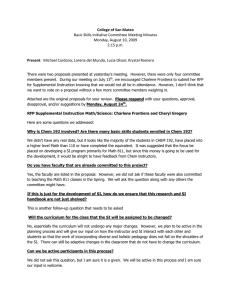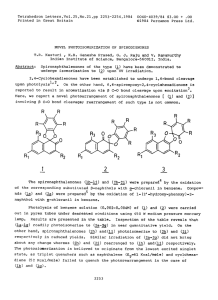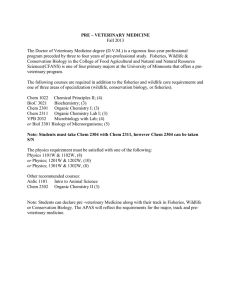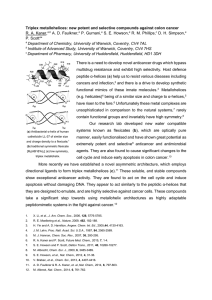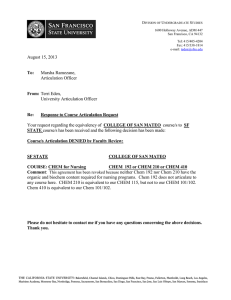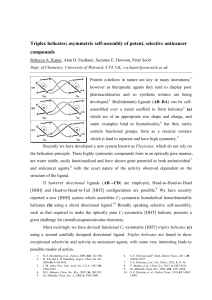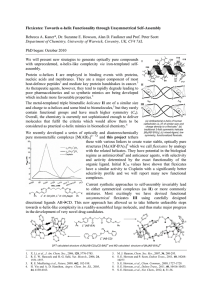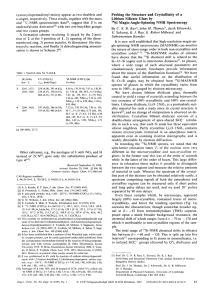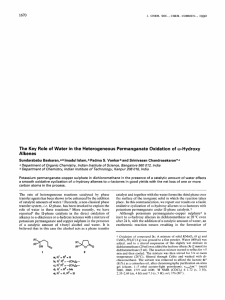Computational Materials Discovery meets Experiment
advertisement
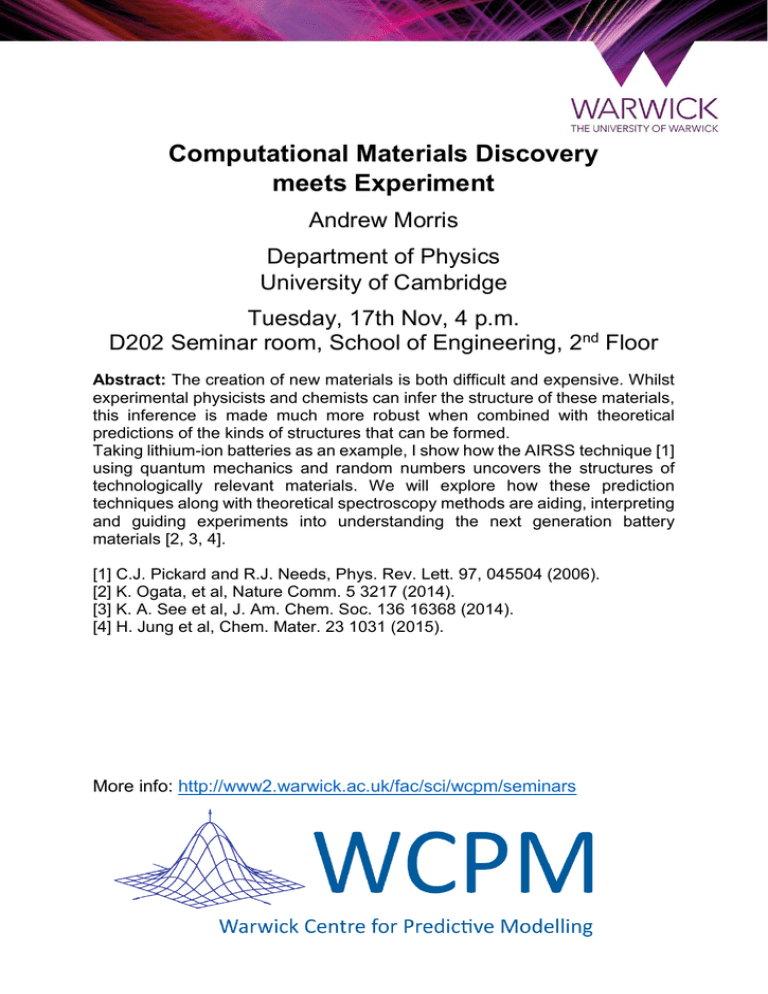
Computational Materials Discovery meets Experiment Andrew Morris Department of Physics University of Cambridge Tuesday, 17th Nov, 4 p.m. D202 Seminar room, School of Engineering, 2nd Floor Abstract: The creation of new materials is both difficult and expensive. Whilst experimental physicists and chemists can infer the structure of these materials, this inference is made much more robust when combined with theoretical predictions of the kinds of structures that can be formed. Taking lithium-ion batteries as an example, I show how the AIRSS technique [1] using quantum mechanics and random numbers uncovers the structures of technologically relevant materials. We will explore how these prediction techniques along with theoretical spectroscopy methods are aiding, interpreting and guiding experiments into understanding the next generation battery materials [2, 3, 4]. [1] C.J. Pickard and R.J. Needs, Phys. Rev. Lett. 97, 045504 (2006). [2] K. Ogata, et al, Nature Comm. 5 3217 (2014). [3] K. A. See et al, J. Am. Chem. Soc. 136 16368 (2014). [4] H. Jung et al, Chem. Mater. 23 1031 (2015). More info: http://www2.warwick.ac.uk/fac/sci/wcpm/seminars


